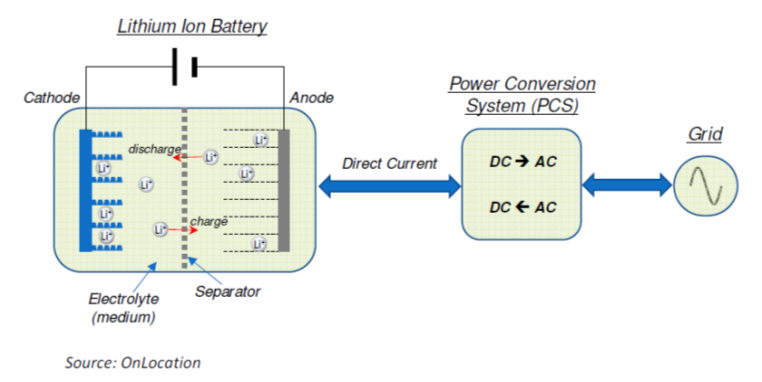Chemical storage refers to storing electricity that can be released as required though chemical processes. Known also as batteries that can act as chemical energy storage and become future energy generation solutions more efficient and profitable. They are especially interesting for intermittent renewable sources (e.g. solar or wind energy generation) for making efficient use of the availability.
There is nowadays different types of batteries. Follows up a non-exhaustive list of typologies with the aim of providing a general outlook:
- Lithium-Ion batteries) are the fastest growing battery type for industry and residential use. They can store high amounts of energy and are highly efficient, operating under a wide range of temperatures. However, their lifespan is not good enough and needs to be improved.
- Lithium-Ion Polymer batteries) they have a longer lifespan and better safety record keeping high-energy efficiency. However, they are uneconomical in many cases.
- Lead-Acid batteries) can be designed to power large-scale applications and are relatively cheap, safe, and reliable. They are already used in large storage and uninterrupted power supply solutions (e.g. powering backup generators). Their problem is that they are rather large, heavy, and can't be moved. Moreover, their performance under cold temperatures is not good and they have a short life cycle.
- Flow batteries) in this case unlike conventional battery systems, the energy output is independent of the energy storage capacity which depends on the size of the tank. Their energy output ratio to weight can be up to three times better than lead-acid batteries but they are less efficient.
- Sodium Sulphur batteries) uses liquid sodium and sulfur as electrolytes. This composite has very high energy and power density as well as a long cycle and can be produced from inexpensive materials. But they need high temperatures for operation (about 300-350ºC) and therefore require energy to keep them operational. Furthermore, they are highly corrosive and cells must be kept stationary.

Comments ()